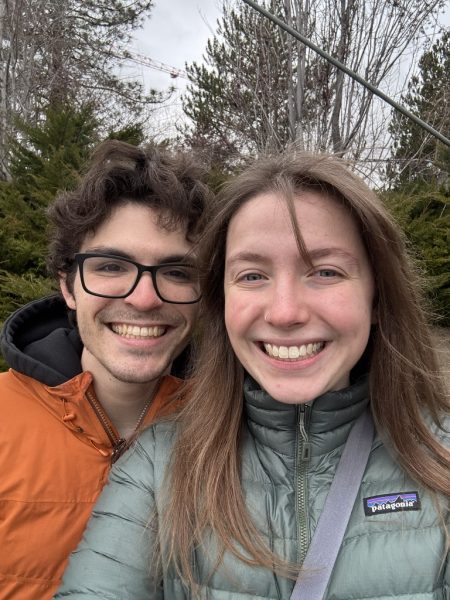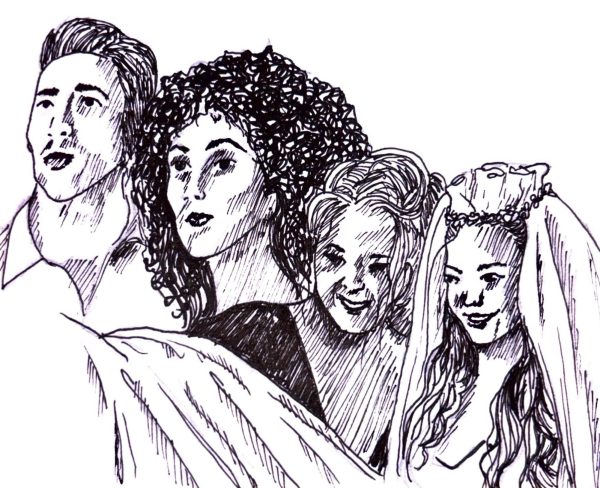The legend of sleepy hollow, is it really a spooky story?
A look into the Sleepy Hollow Haunted Hayride and the book that inspired it.
The Sleepy Hollow Haunted Hayride is an event every year in the spooky town of Sleepy Hollow, New York, a real town and the setting of Washington Irving’s book “The Legend of Sleepy Hollow”. At the spooky attraction, people are subject to an immersive experience that takes them on a hayride through the Sleepy Hollow Cemetery while being followed by a headless horseman. The hayride is inspired by the legend of a headless rider on horseback most famously adapted by Irving.
Gail Fraioli, a Westchester county native who was hired to scare people at the Sleepy Hollow haunted hayride in her teens, discussed what she did at the hayride and what it was.
“I stood in the woods. … When the hayride went by, I would jump out and scare people on the ride. The truck pulls a wagon full of hay. People sit on it and it drives through the Sleepy Hollow Cemetery,” Fraioli stated in an email.
In addition, she spoke about how many people who work for the event are actually from Sleepy Hollow, how long the event has been going on and her general impressions after participating in the event.
“Most if not all of the people who participate in the event are from the area. The event has been going on for over 25 years. It’s really fun and amazing for local businesses and it was created by Washington Irving,” Fraioli said.
While Frailoi has a great knowledge of the event, Trinity Professor Claudia Stokes has great knowledge of the author who made Sleepy Hollow famous. Her knowledge of the author, Washington Irving, comes from her specialty in nineteenth-century American literature. In her book “Old Style: Unoriginality and Its Uses in Nineteenth-Century U.S. Literature,” she explains Sleepy Hollow’s connection to Washington Irving.
“Unoriginality was not a liability, it was an asset. Unfortunately, we have failed to recognize this and we’re evaluating writers of the past for modern standards that didn’t exist yet. So I think one of the major figures in that is Washington Irving. … He was the nation’s first literary celebrity. … Yet, scholars have often been very dismissive of him. … I argue that Irving’s reputation in fact is kind of a casualty of the modern veneration of experimentation, which I think is completely unfair,” Stokes said.
Her argument comes from spending several years studying Irving in isolation. She answers the question as to how much of the work is fictionalized and how much of the work is true.
“It’s all fiction. … It’s not a scary story at all. It’s like you know it was made into a film that’s sort of like a Halloween horror film. The story is actually very funny and it’s not a scary story. It’s mostly a portrait of Westchester, … it’s a portrait of this guy Icabod Crane who is a Connecticut School Master and is really ambitious,” Stokes said.
The town of Sleepy Hollow is in Westchester County, where Irving lived for a time and got the idea for his story. Although the town and the legend existed before Irving, the story he wrote is the version most are familiar with and which inspires the festivities in Sleepy Hollow, New York today. Stokes Explained the plot of the story.
“Crane is interested in wooing this woman Katrina, who is the daughter of a wealthy land-owner in the area,” Stokes said. “He has a rival for her affection, this man named Brom Van Brunt. He’s interested, in typical Irving fashion, in highlighting the Dutch culture of that region. He has a rival for Katrina’s affections and Brom plays a trick on Ichabod Crane to drive him out of town,” said Stokes.
After that, she describes the legend which inspires Brom’s trick and is the modern tradition of the Headless Horseman Hayride.
“It is this story of the headless horseman who is a Hessian mercenary and it’s very clearly a trick. … It’s not explained but it’s very clearly a stunt that Brom Van Brunt plays on Ichabod Crane who is so terrified that he runs away and is never seen again and Van Brunt succeeds in wooing Katrina,” Stokes said.
In regard to the elements of truth that the story does contain, she speaks about Irving’s interests as well as the historical significance of the headless horseman. Which helps explain the Hayrides historical significance.
“Irving is very interested in folklore. … He is very interested in keeping with nineteen hundred’s romanticism. He’s interested in both recording and in fabricating American folklore,” Stokes said.
She also talks about how she finds it interesting that Irving’s famous stories have been commonly remembered incorrectly. Such as the way the Headless Hayride depicts the legend versus Irving’s tale.
“In a way, Irving was interested, again in keeping with Romanticism, in fabricating American folklore. … He was successful because these stories have circulated in popular memory and have been misremembered.”
She is less concerned about the incorrect remembrance of the story, noting things such as the hayride and movie as all in good fun, and is more concerned that people actually read Irving’s story.
“It’s a delightful story, I mean you should read it because I think you’ll just know what I mean. … He’s just really charming and cozy and tells a good story,” Stokes said.

Hi! I am a freshman and my major and minor are undeclared as of now. As an Arts and
Entertainment Reporter, I am passionate about exploring restaurants...





